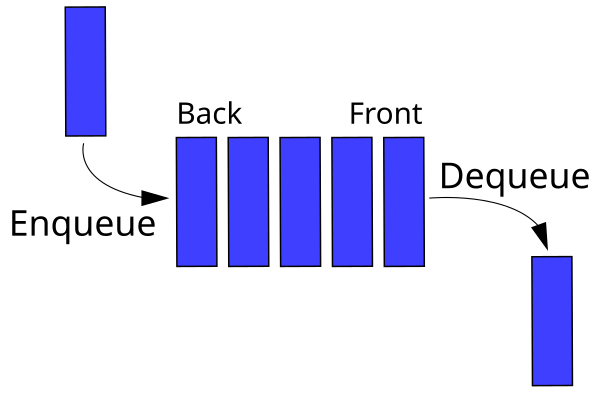Topics:
- Linked Lists
- Queues
- Binary Search Trees
- Heaps
One of the most prevalent problems that students encounter when trying to implement data structures is attempting to jump in and start writing code without fully understanding how the method/function they're trying to implement works in different cases, with different inputs, etc.
For this reason, you're being provided with a pseudocode.md file for scratch space so that you can write out pseudocode or just enumerate the steps your implementation is going to perform. From there, implementing the method just entails the task of translating your enumerated steps into code. While it isn't required for you to use the provided scratch space, it is highly encouraged that you either write out the steps of your code, or draw out a diagram that makes clear what the steps are, as this is a good habit to get yourself into. Coming up with and spelling out all the steps your code is going to take is easier when you don't also have to worry about thinking about the code itself.
-
Implement each data structure, starting with the linked list data structure. Make sure you're in the approriate directory, then run
python3 test_[NAME OF DATA STRUCTURE].pyto run the tests for that data structure and check your progress. Get all the tests passing for each data structure. -
Open up the
Data_Structures_Questions.mdfile, which asks you to evaluate the runtime complexity of each of the methods you implemented for each data structure. Add your answers to each of the questions in the file.
- Should have the methods:
add_to_tail,remove_head,contains, andget_max.add_to_tailreplaces the tail with a new value that is passed in.remove_headremoves and returns the head node.containsshould search through the linked list and return true if a matching value is found.get_maxreturns the maximum value in the linked list.
- The
headproperty is a reference to the first node and thetailproperty is a reference to the last node. Build your nodes with objects.
- Should have the methods:
enqueue,dequeue, andlen.enqueueshould add an item to the back of the queue.dequeueshould remove and return an item from the front of the queue.lenreturns the number of items in the queue.
- Should have the methods
insert,contains,get_max.insertadds the input value to the binary search tree, adhering to the rules of the ordering of elements in a binary search tree.containssearches the binary search tree for the input value, returning a boolean indicating whether the value exists in the tree or not.get_maxreturns the maximum value in the binary search tree.
- Should have the methods
insert,delete,get_max,_bubble_up, and_sift_down.insertadds the input value into the heap; this method should ensure that the inserted value is in the correct spot in the heapdeleteremoves and returns the 'topmost' value from the heap; this method needs to ensure that the heap property is maintained after the topmost element has been removed.get_maxreturns the maximum value in the heap in constant time._bubble_upmoves the element at the specified index "up" the heap by swapping it with its parent if the parent's value is less than the value at the specified index._sift_downgrabs the indices of this element's children and determines which child has a larger value. If the larger child's value is larger than the parent's value, the child element is swapped with the parent.
-
Implement a doubly-linked list class that adheres to the following specification. Uncomment the tests in the
tests/doubly-linked-list.test.jsfile in order to test your solution.-
Consists of a
DoublyLinkedListclass and aListNodeclass. -
The
ListNodeclass has the methodsinsert_after,insert_before, anddelete.insert_afterinserts a new node with the input value after the calling node.insert_beforeinserts a new node with the input value before the calling node.deleteshould remove the calling node from the list (think about what that means).
-
The
DoublyLinkedListclass, like theLinkedListclass, holds references to theheadof the list as well as thetail; it has the methodsadd_to_head,remove_from_head,add_to_tail,remove_from_tail,move_to_front,move_to_back, anddeleteadd_to_headcreates a new node with the input value and adds the new node as the new head of the list.add_to_tailcreates a new node with the input value and adds the new node as the new tail of the list.remove_from_headremoves the current head of the list; the current head's next node should be designated as the new head.remove_from_tailremoves the current tail of the list; the current tail's previous node should be designated as the new tail.move_to_frontreceives a node and moves that node (if it exists in the list) to the front of the list as the new head.move_to_endreceives a node and moves that node (if it exists in the list) to the back of the list as the new tail.deletereceives a node as input and deletes that node from the list.
-





